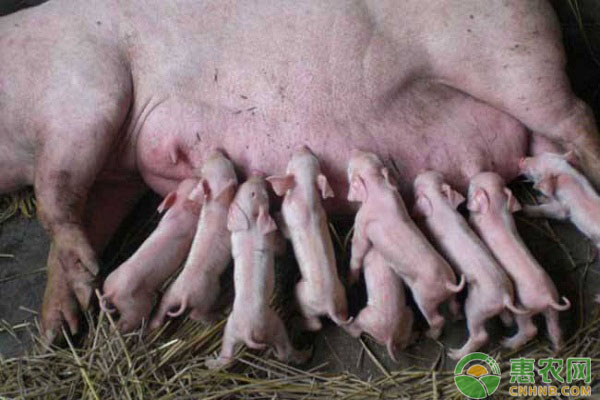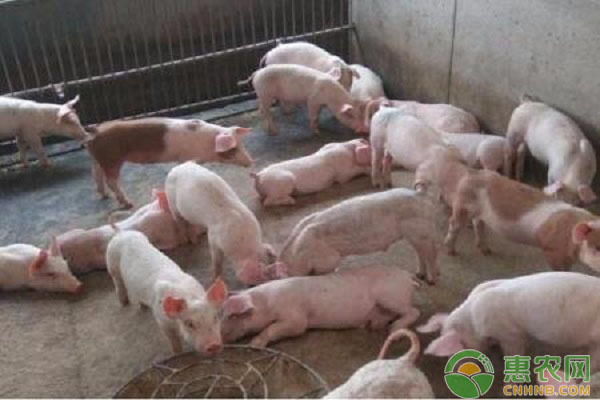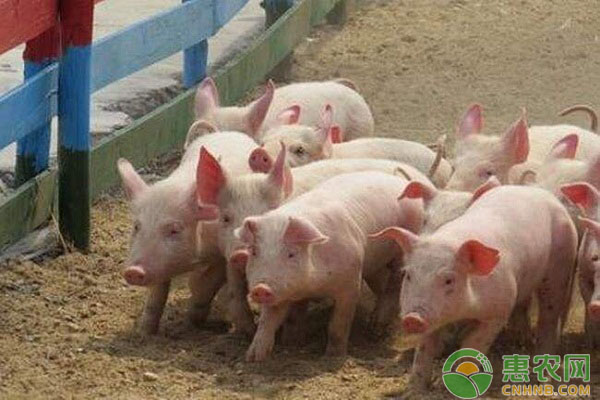In recent years, the pig industry has developed rapidly. Many people have joined the pig industry. As a result, a large number of small pig raising booms have emerged in rural areas. However, many farmers’ farms have problems with stillbirths of primiparous sows. Serious losses, this article mainly analyzes the reasons and countermeasures for this situation.

First, the main reason for the birth of sows in primiparous sows
1. Nutrition and feed
1.1 Nutritional deficiency or nutritional imbalance
At present, sows raised in most large-scale farms are excellent varieties, and the nutritional requirements for feed are very demanding. If the traditional method of feeding sows is still used, without scientific, blindly increase the amount of concentrate, resulting in high feed energy value, insufficient crude fiber content, sows are too fat or constipation often occurs; unscientific use of additives leads to certain Nutrient elements, including various types of proteins, minerals and vitamins, especially trace elements such as selenium, zinc, iodine and manganese. The lack or imbalance of vitamins such as A, D, E, B6 and B2 will directly cause sow nutrition. Obstacles and thus their reproductive performance.
1.2 Poisoning factors
Poor management of feed and raw materials, mildew and deterioration, zearalenone, aflatoxin and other standards can cause direct abortion, stillbirth and weakening of newborn piglets.
2. Environment and management
2.1 Environmental factors
The sow has long been restricted to breeding. Due to the promotion and use of the limit bar, the sow lacks exercise, and the contractility of physical strength, endurance and muscle is greatly reduced. The sow often has a long process of labor.
Excessive temperature in the pregnancy house affects the normal function of the sow's endocrine system, resulting in more dead fetuses; excessive temperature in childbirth can speed up the sow's respiratory rate, and even cause breathing difficulties, increasing the chance of stillbirth. At the same time, the pig house is poorly ventilated, the oxygen in the delivery room is insufficient, the harmful gas is exceeded, and the proportion of stillbirth in the sow is also increased. In severe cases, the sow will die.
2.2 Management factors
Poor feeding and management, such as pregnancy, low temperature and humidity, excessive density, poor ventilation, drinking ice slag water; sows fighting, climbing, jumping circles; Uneven ground causes sows to be damaged; nearby firecrackers, loud noises, etc. can cause sows to die.
Sows that are normally delivered usually do not need midwifery. When they need a midwifery, the method is incorrect, the action is rude, or the incorrect use of oxytocin can cause the sow to be difficult to produce and cause stillbirth.
Abuse of antibiotic treatment or health care, causing liver and kidney damage, causing edema of the birth canal and poor vitality or death of piglets; a large number of laxatives, anthelmintics, diuretics, etc. are used during pregnancy, causing inflammation of the birth canal or reproductive function disorder, and stillbirth.
3. Health and disease
The primiparous sows are in poor health and have poor resistance to disease, especially reproductive disorders. In production practice, Japanese encephalitis, parvovirus disease, and pseudorabies are the most serious hazards, followed by swine fever, infectious gastroenteritis, swine flu, leptospirosis, and toxoplasmosis.
4. Fetus and maternal
4.1 The fetus is too large, the birth canal is relatively narrow
The birth canal of primiparous sows is relatively narrow, and it is very prone to dystocia and long-term labor and cause stillbirth. This is a natural phenomenon. But in many cases, it is caused by man. For example, the past experience is that the sows began to use the fetus or lactation material to attack the fetus after 85 days of pregnancy, and the diet could be increased to more than 3.5 kg. This method of premature births will make the sow too fat, the fetus is too large, and the chance of producing stillbirth will naturally rise.
4.2 The impact of individual sows
For high-yield sow breeds, the more litters, the more the number of stillbirths; the first litter of the first-born sow is higher than the sow, and the stillbirth rate is relatively high; the sow is too large or too small. , will cause increased stillbirth; pregnancy less than 112d or higher than 117d, will increase the risk of fetal survival in the uterus, the rate of stillbirth will increase.
In addition, sows have too long labor, too much prenatal eating, constipation in sows, high temperatures in summer, high stress, irritability, etc., all of which can cause stillbirth.

Second, prevention measures
1. Optimize feed and nutrition for primiparous sows
1.1 Use qualified full-price compound feed
Large-scale pig farms should use qualified full-price compound feed to ensure the comprehensive and balanced nutrition of the sow during pregnancy. Small farms without conditions should be prepared according to the existing feed ingredients, and professional technicians should be prepared to formulate scientific formulas and use reliable feed ingredients, premixes or additives. When preparing the diet, it should be weighed strictly, mixed thoroughly, and the materials with mildew and ice residue should not be used.
1.2 Control the body condition of the primiparous sow during childbirth, prevent excessive fat or too thin
In practice, over-fertilized, too thin sows can be seen at a glance. The body condition of the primiparous sow should be kept full during the delivery, the upper line is straight, and the bones are not visible. Below the lumbar vertebrae, behind the ribs and in front of the pelvis, there is an obvious dimple, indicating that the pregnant sow is not too fat. It is also thin, and it is a standard body condition. Therefore, in the breeding management work, according to the growth and development of the fetus and the sow's public opinion, the restriction breeding should be carried out from the 98th day of pregnancy. In general, a standardized diet of 3.5 to 4.5 kg is supplied daily from 98 days of pregnancy to 3 days before delivery.
2. Optimize the environment and standard management
2.1 Optimize the primiparous sow pregnancy and delivery room environment
The primiparous sows and the delivery room should be ventilated on the basis of heat preservation to keep the pig house fresh and free of obvious ammonia smell. The temperature of the pig house can be controlled at 16~18 °C to avoid raising the sows at high temperature. Or in a cold environment.
2.2 Strengthening the management of primiparous sows
In the pre-pregnancy period of the primiparous sows, the exercise can be appropriately restricted and placed in the positioning bar. After 36 to 90 days of gestation, the pigs should be transferred to the large bar to ensure sufficient exercise in the late pregnancy; the pig house is kept quiet, no strangers are allowed. Other animals should enter and exit, minimize the stress during the process of group transfer, disinfection and bed production; keep the environment quiet when transferring groups, avoid the sows from fighting; the ground of the bed should be smooth, do anti-slip treatment; strengthen the sows Care, use easy-to-digest liquid foods, such as warm bran salt soup, avoid sows prenatal anorexia; reasonable midwifery during childbirth, avoid in the early stage of sow delivery, strong blame and fetal dystocia Use oxytocin, but if you encounter the next piglet that has not been produced after 30 minutes, you can immediately inject 10 international units of oxytocin to assist birth; when delivery, do not interfere too much with the sow Normal childbirth, at the same time to strengthen the care of newborn piglets after childbirth, in order to maximize the survival rate of newborn piglets.

3. Optimize the health of primiparous sows
Strengthen the prevention and control of viral diseases. It is necessary to pay attention to the immune prevention and control of virgin porcine hog, blue ear disease, parvovirus disease, pseudorabies, JE and other viral diseases, select appropriate vaccines and immunization procedures, and use the correct dose for effective immunization.
Select sensitive drugs for prevention and health care for bacterial reproductive disorders and some parasitic diseases that may affect the normal growth and development of the fetus.
Medical Cold Patch
Throat Pain Relief Patch
[Name] Medical Cold Patch
[Package Dimension] 36 round pieces
The pain relief patch is composed of three layers, namely, backing lining, middle gel and protective film. It is free from pharmacological, immunological or metabolic ingredients.
[Scope of Application] For cold physiotherapy, closed soft tissue only.
[Indications]
The patches give fast acting pain relief for acute and chronic tonsillitis.
[How To Use a Patch]
Please follow the Schematic Diagram. One piece, one time.
The curing effect of each piece can last for 6-8 hours.
[Attention]
Do not apply the patch on the problematic skin, such as wounds, eczema, dermatitis,or in the eyes. People allergic to herbs and the pregnant are advised not to use the medication. If swelling or irritation occurs, please stop using and if any of these effects persist or worsen.notify your doctor or pharmacist promptly. Children using the patch must be supervised by adults.
[Storage Conditions] Store below 30c in a dry place away from heat and direct sunlight.
Throat Pain Relief Patch,Throat Pain Relief Pad,Throat Pain Relief Plaster,Antitussive Patch
Shandong XiJieYiTong International Trade Co.,Ltd. , https://www.sdxjmedical.com